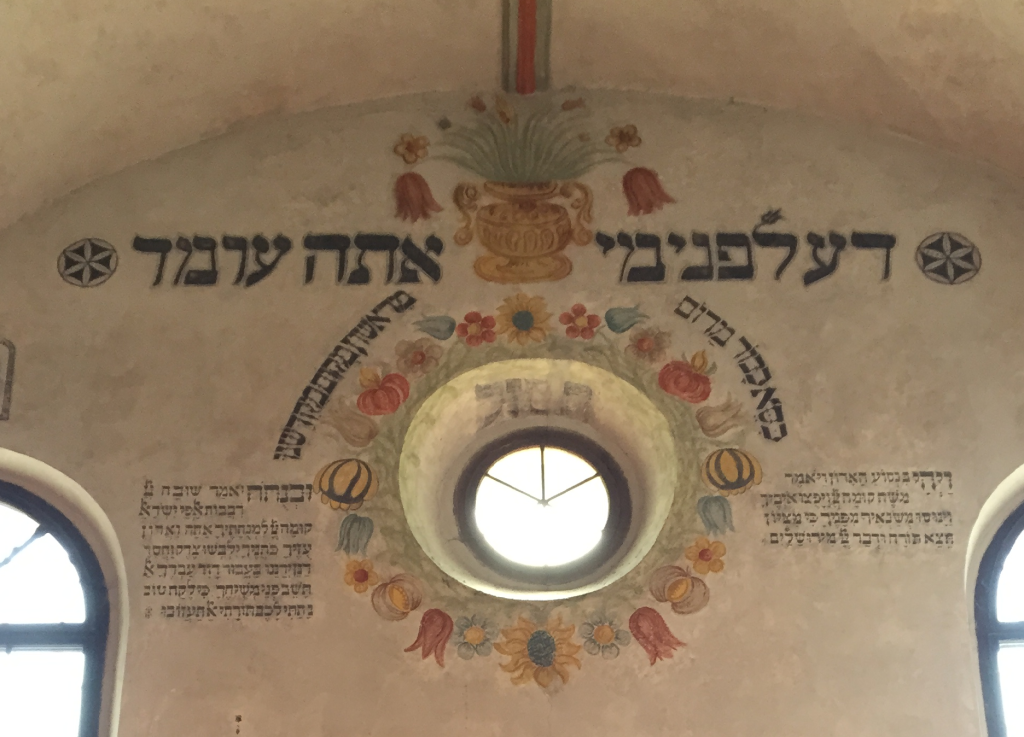Wrapping It All Up – Part I
We have been standing in prayer before God for some time now. It is time for us to wrap things up. Concluding a conversation with God can be a difficult task. Do we really want it to end? Or are we itching to finish up? Have we felt embraced in God’s Presence, or have we forced ourselves to mouth empty words?
Because wrapping up can be as hard as starting off, our tradition adopts a structural approach to help us along. It gives us three opening and three closing blessings, and they are found in every recitation of the traditional Standing Prayer (`Amidah). It is the middle section of blessings that changes with the weekly and yearly calendar. The middle section is very different when recited on weekdays, than on Shabbat or Festivals or on the Days of Awe. But our introductory and concluding blessings remain constant; they are that important. They are that perennially necessary. They are needed to get us going and, after we have done our best, they are needed to help us gracefully bow out of our encounter.
How are they designed to accomplish this purpose? We have already looked at the themes of the first three blessings (and of the thirteen middle blessings for the weekday). Now we are about to explore some of the messages of the last three. One guiding idea we can bear in mind is that the three closing blessings are related to the three opening ones. They are set up in a chiastic order. That means that, if the first three blessings are ordered as A, B, C, then the last three blessings are in reverse order – c, b, a. The first closing blessing relates to the last opening blessing – “C” and “c,” and so forth.
So what is our first closing blessing about? It hearkens back to the theme of holiness that we celebrated at the start of our prayers. That opening blessing celebrates our potential for holiness. It celebrates our consciousness of God’s holiness and our own partnership with God as “holy ones” who are capable of extending the consciousness of God’s holiness into the world. The holiness blessing is the last of the opening blessings because it is meant to encourage us to begin our specific prayers in earnest. “You can do it!” the blessing says.
Now we have finished offering those prayers that we were empowered to give. And, like the gift that they are, we wrap them up, and ask God to accept the prayers – the gifts – we have offered, and hopefully find them desirable: “R’tzeh – choose to embrace Your people Israel and their prayers … May You accept their fiery offerings and prayers with grace and love, and may Your people’s worship and service be graciously received always.”
Because we and God are partners in holiness (the third opening blessing), we hope that our prayerful service will always be welcomed by God.
But there is one other element added to this blessing: Zion. We ask that God “bring back the service to Your holy shrine.” Thus we link the value of holiness to a particular place, rather than leaving it as an abstraction. And we name that place as we conclude the blessing: “Who returns the Divine Presence to Zion.” While we affirm that holiness inheres in all of God’s creation, we must bring holiness into focus and give it specificity in time and space so that it can become a compelling reality and not remain a fuzzy platitude.
So we endow certain places and times with holiness to a degree that supersedes the holiness of every moment and every space. Shabbat is holy relative to the other days of the week. Zion is holy relative to the rest of the world. But what – and where – is Zion? The name has been variously applied to the land of Israel, in general, to Jerusalem, in particular, and to the area of the ancient Temple, most specifically. In this meaning we wrap up our prayers with a wish that God’s Presence become manifest once more in that sacred space, where God’s Presence was clearly manifest, as of yore. Yet, we should recall that we have already asked for the rebuilding of Jerusalem in our prior prayers. Are we simply reiterating that request?
We can differentiate between the earlier prayer’s plea for the physical and political restoration of Jerusalem and this blessing’s plea for the spiritual renewal of that place. But the placement of this prayer in the position of “wrapping up” should alert us to another level of its meaning. Because we need to bring our prayers to a close, because we are conscious that our intimate connection with God will soon end, our prayer that our prayers be effective – accepted – entails a hope that our prayer experience continue to reverberate for us even after it concludes.
Thus, our great teachers of prayer, our Chasidic masters, have explained that Zion is not only a specific place in the Middle East. Zion is the place of focus within each of us. Here is how Rabbi Yehudah Aryeh Leib Alter of Ger (1847 – 1905) describes Zion:
‘Zion’ means the point that each thing has as an imprint and sign that it comes from the Creator. It is the life force that enlivens each thing. A person who clings to this point, whose entire life is drawn after this point, becomes a partner [with God] in the work of creation … and then nature is no longer able to conceal the power of holiness. (Sefat Emet, Bereshit, p. 5)
In this understanding, our process of wrapping up asks us to appreciate the “partnership in holiness” that we declared right before we began our prayers in earnest and that we wish to believe we have faithfully exemplified. We pray that our outpouring of spirit toward God will be answered with an outpouring of Spirit toward our most essential inner being. We do not say that God will return the Divine Presence to Zion some time in the future. We proclaim that God “returns” to Zion continuously, all the time. It is God’s ongoing and perpetual return to each being’s inner focal point that sustains and gives ‘Zion’ its very existence.
We pour out our hearts so that our hearts will be replenished. In the words of the 23rd Psalm, I take my leave from God “Who restores my spirit.” Thus, our wrapping up is not a process of bidding a final farewell, but of taking a temporary leave, for, just as God keeps returning focal point God’s Presence to Zion, so do we continually return our presence to God.
Image: Wall detail of a synagogue in the Trebic Jewish Quarter Czech Republic, photograph taken by Sarita Eisenberg


These details about prayer and holiness make enormous sense because we are shown the way we can connect to G-d in the world. I very much like the optimism-we are slowly saying goodbye to G-d during the time we have been in prayer but we know with great assurance that we can shortly return to this beautiful connection to G-d the next time we engage in prayer. Thank you, Rabbi, for your depth and thoughtfulness.
Noa Freudberg